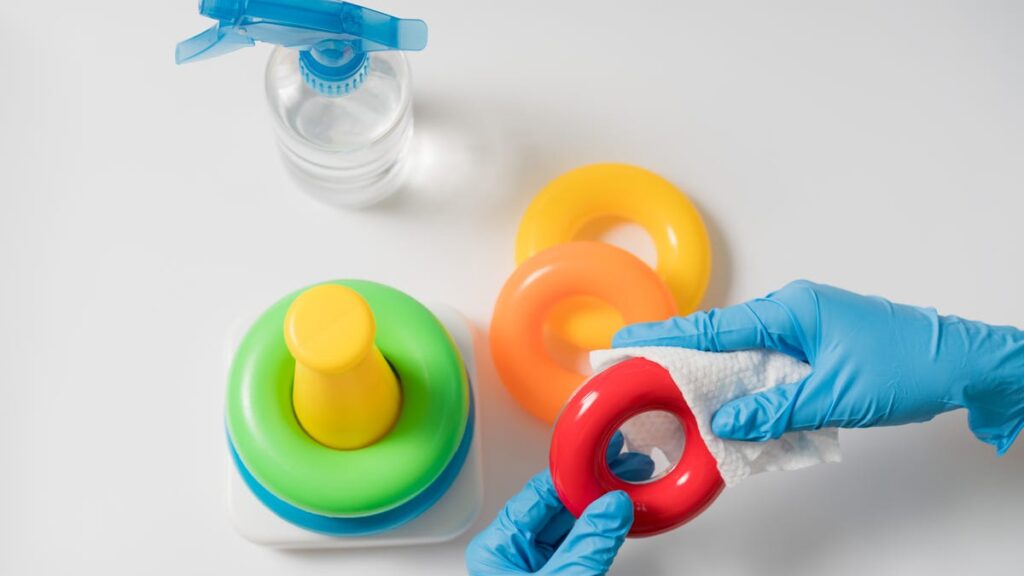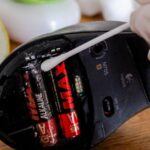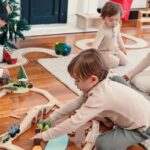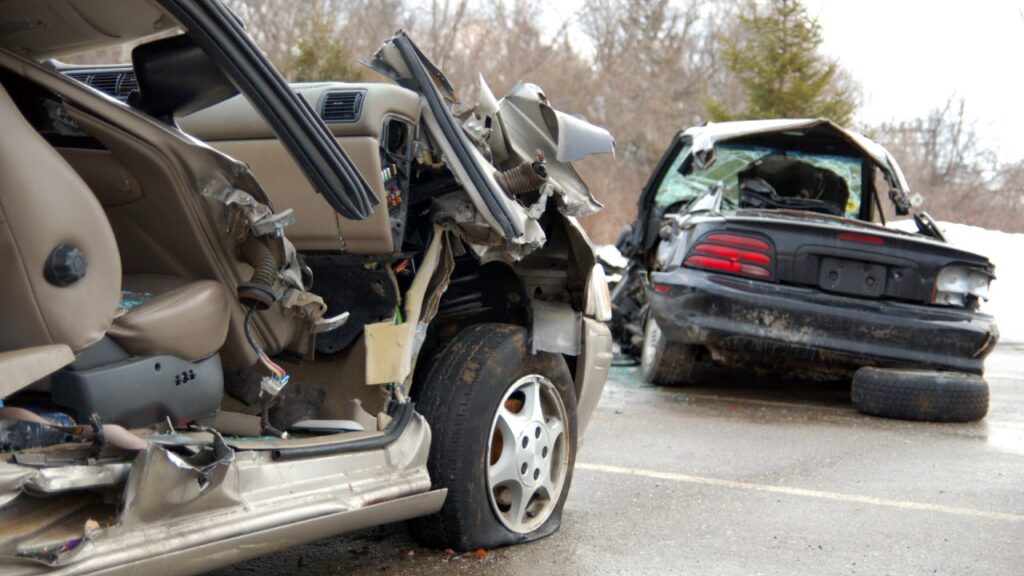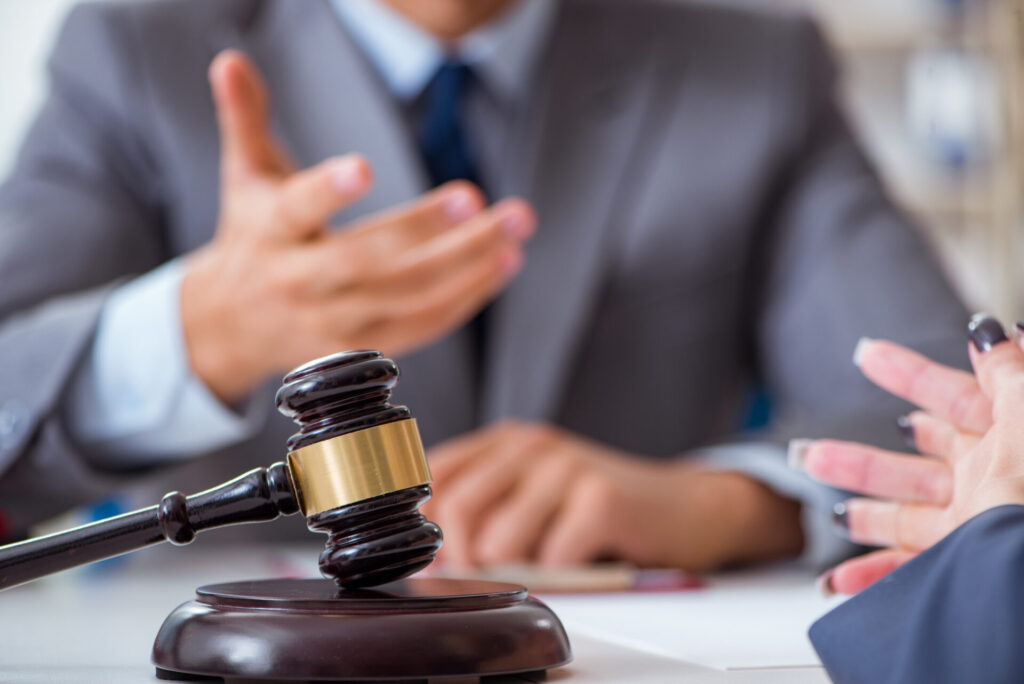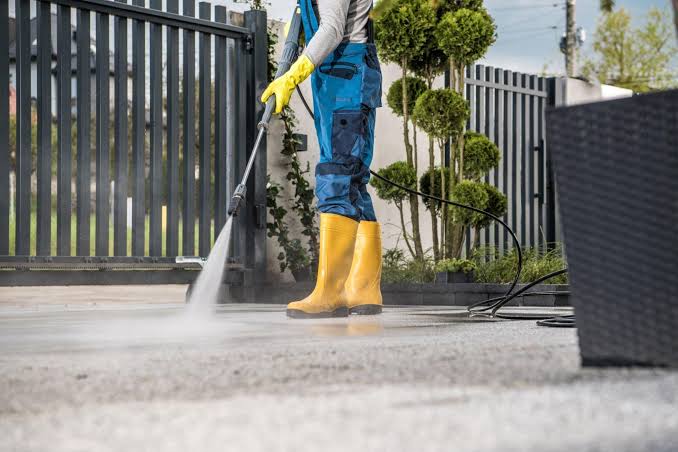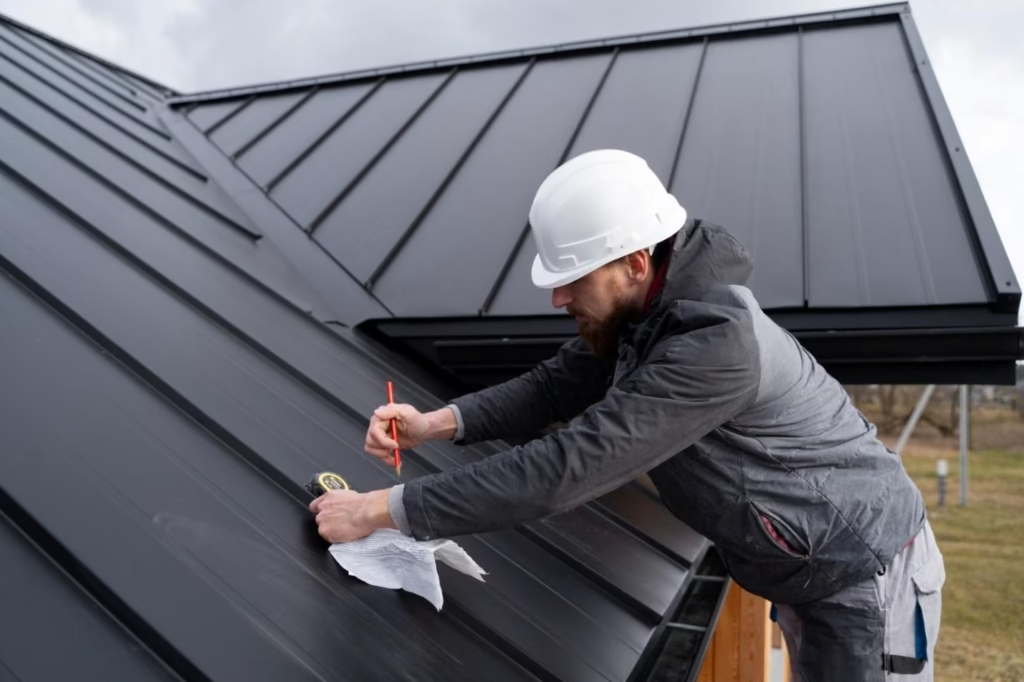Babies use their hands and lips to investigate their environment, turning their toys into magnets for viruses, dirt, and spit. As a consequence, keeping these toys clean is important for a baby’s health as well as appearance. Toys for babies may easily get contaminated with mildew, allergies, and dangerous pathogens. Parents need to understand how dangerous dirty toys may be and how to keep the play area clean. Maintaining a healthy environment where infants may develop, play, and explore safely requires regular cleaning and disinfection.
What Happens If You Don’t Clean Baby Toys Regularly?
Germs, Bacteria, and Viruses Thrive on Toys
There is a high probability that baby toys will become a breeding ground for diseases, especially if they are shared with other children or if they are thrown somewhere on the floor. There are viruses and bacteria that are present in toys that are often mouthed, including those that are responsible for the common cold, the flu, and stomach disorders. When not properly cleaned and disinfected on a regular basis, these toys have the potential to spread germs throughout the house. It is essential to have a solid understanding of how to disinfect baby toys in order to prevent this kind of hidden threat from affecting your child’s health.
Risk of Allergies and Infections in Infants
Infants’ immune systems are immature, leaving them more susceptible to infections and allergic responses. When dust, saliva, or pet dander accumulates on toys, it may cause dermatitis, rashes, and respiratory problems. In severe circumstances, unclean toys may cause eye and ear infections. To prevent these avoidable health concerns, parents must emphasize toy cleaning and ensure that their baby’s immune system grows without continual exposure to dangerous irritants.
Mold and Dust Build-Up in Soft and Plastic Toys
Soft toys, particularly plush animals and fabric books, may readily collect moisture, resulting in mold development if not properly dried. Plastic toys with tiny cracks may collect dust and food particles. This build-up eventually provides a breeding ground for allergies and fungus. Regular cleaning helps keep toys in good shape and protects your infant from dangerous particles hidden in apparently innocent playthings.
How Often Should You Sanitize Baby Toys?
Age and Health of the Baby Matter
Younger infants, particularly newborns, need a cleaner environment due to their low resistance to infection. If your infant was born preterm or has a medical condition, toys should be cleaned more regularly. Babies with allergies also require a more stringent cleaning regimen. Older children with stronger immune systems may need less frequent sanitization of toys, but regular cleaning is still important in maintaining a healthy environment.
Recommended Cleaning Frequency by Toy Type
Mouthed toys, such as teethers or pacifiers, should be sterilized after each usage. Plastic and rubber toys may normally be cleaned once a week unless they are regularly used. Wash machine-washable plush toys every one to two weeks. Larger objects, like play mats or swings, may be cleaned every month. Always read the manufacturer’s directions for each toy to prevent harming the materials while washing.
Situations That Require Immediate Sanitizing
Certain circumstances need urgent cleaning of infant toys. Toys must be cleaned immediately after a playdate if a toy is dropped outside or if a kid becomes ill. Teething toys and pacifiers should be cleaned quickly when they fall to the ground. Prompt intervention decreases the danger of germ transmission and ensures that toys are safe for continuing use. Parents should understand how to properly sanitize infant toys so that they may react swiftly if necessary.
What Are the Best Ways to Clean and Sanitize Baby Toys?
Natural Cleaning Methods (Vinegar, Steam, etc.)
Natural cleansers such as white vinegar and steam provide excellent, baby-safe options. To clean plastic and wooden toys, use equal amounts of white vinegar and water. Steam cleaners are effective in eliminating germs from soft toys without the use of chemicals. These procedures are mild yet effective, making them appropriate for everyday usage. Vinegar also helps to eliminate smells from toys, keeping them fresher for your infant. Always let toys air dry fully after natural disinfecting.
Safe Disinfectants and Toy-Specific Solutions
Some baby-safe disinfection sprays and wipes are particularly intended for use with toys. Most surfaces are safe when using products containing hydrogen peroxide or alcohol-free sanitizers. To clean thoroughly, put dishwasher-safe plastic toys on the top rack. Lightly spray disinfectant on wooden toys and wipe them clean. Understanding how to disinfect baby toys with appropriate products is vital to ensuring both effectiveness and safety.
What Not to Use: Harsh Chemicals to Avoid
Avoid disinfectants with bleach, ammonia, or strong alcohols, particularly on toys that newborns put in their mouths. These substances may leave dangerous residues if consumed. Scented or multipurpose cleansers may potentially irritate a baby’s skin and respiratory system. Even “natural” goods may include essential oils that are not suitable for newborns. Use gentle, baby-specific solutions, and always thoroughly rinse toys after using any cleaning agent.
Conclusion
Keeping baby toys clean is more than just a hassle; it’s an essential step in protecting your child’s health. Toys include germs, allergies, and mildew, which may harm a baby’s growth. Regular sanitizing, particularly after sickness or prolonged usage, reduces these dangers. Learning how to disinfect baby toys guarantees that you use the most appropriate ways for each material. Whether you use natural remedies or baby-friendly disinfectants, keeping toys clean promotes a safe and healthy play environment. Add toy cleaning to your daily routine to provide your baby with a cleaner, happier environment to explore.
